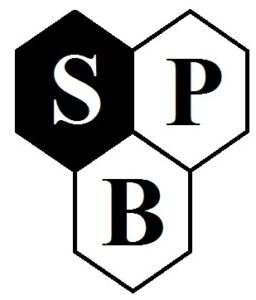Suggested Melting Schedule for Spruce Pine Batch
A successful melt depends on both time and temperature. This schedule is based on experience gained from melting in 150-lb. free-standing pot furnace, which melted at a rate of about 25 Ibs every two hours. A larger furnace may melt at a faster rate. Individual experience may vary depending on the size of your furnace and your rate of charging.
DISCLAIMER: DUE TO THE LACK OF STANDARDIZATION IN STUDIO FURNACE DESIGN YOUR EXPERIENCE MAY DIFFER GREATLY FROM THE SUGGESTIONS BELOW. THE GLASS ARTIST MUST APPRECIATE THE GREAT NUMBER OF VARIABLES ASSOCIATED WITH MELTING QUALITY GLASS. WE HIGHLY RECOMMEND USING REDUNDANT INSTRUMENTS FOR THE MEASUREMENT OF TEMPERATURE AND KEEPING EXCELLENT RECORDS FOR ASSESSING ALL ASPECTS OF THE MELT PROCESS. THIS INCLUDES SAMPLING AND PROOFING DURING MELTING AND FINING.
Cristalica Cullet
The information on this page pertains to Spruce Pine Batch, not Cristalica Cullet. Please view the Cristalica Technical Specifications PDF for details on Cullet Glass Nuggets.
Spruce Pine Batch Preparation
Note: Your temperature readings are likely to be representative of atmospheric temperature and NOT glass temperature. Glass temperature is the primary determinant in dictating the quality of your melt. Atmospheric temperature readings are relative NOT absolute.
You must have at least two accurate means of determining the temperature. Assuming a working temperature of 2050°F, your charging temperature would be 2250°F or 200° above your working temperature. Preheat your furnace to 2250°F (1232°C). You must maintain 2250-2400°F (1232-1315°C) throughout charging the furnace. Melting and fining at too high or too low a temperature will cause cords.
VERY IMPORTANT: If the temperature of your furnace is 100°F too low it will take twice as long to melt and/or fine out. Most temperature readings are measurements of the furnace atmosphere and not the glass temperature itself. Your furnace is in a constant state of change. Usually it is gradually becoming less efficient and otherwise gradually deteriorating. Furnace function and melt progression is also affected by various weather factors as is the batch itself when it is made. Insufficient time and/or temperature is the most common cause of poor melts.
Charging the furnace
Charge 15 lb. into the empty furnace (any kind). Wait for the batch surface to be flat and glassy and even in color, free from un-melted batch, then charge 25 lb. This will take up to two hours. If you have any problems with the initial charge decrease the size of the charge and wait until the batch is completely gone before adding more. Check your furnace temperature to be sure it has recovered temperature. Continue melting 25 lb. charges the same way until the furnace is full. Each cycle will take up to two hours. With day tank and invested pot furnaces care should be taken to see that the furnace is very well preheated as all heat comes from the top, and the raw batch acts as an insulator and prevents heat from reaching the bottom of the furnace. Stirring the batch is not necessary, but may accelerate the melt and improve glass quality. Stirring should be done about midway through each charge cycle.
Fining, a.k.a. “ The Cook”
Your fining temperature is 2350°F or 300°F above your working temperature.
After the last charge raise the furnace temperature to about 2400°F (1315°C). We believe that you should not get over 2450°F. Hold at 2400-2450°F for about 8 hours. To check the progress of your melt take small gathers and look at the bubbles. When the bubbles are all larger than pinheads, you can turn the temperature down to squeeze the bubbles out. Each furnace will function slightly differently. One furnace will squeeze OK if you turn down to just your working temperature, another may need to be turned down 50-100 degrees below working temperature. A good general rule is that your squeezing temperature is 100° below your working temperature, in this case 1950°F. This will also take about 8 hours.
Refilling your furnace
Use all of the glass in the furnace and repeat the process. Cords will build up in the bottom of the furnace, so it is recommended that you clean the furnace out at about weekly intervals, or at the longest every two weeks.

